formerly eScholarship Editions


|
|
|
|
Your request for similar items found 20 book(s). | Modify Search | Displaying 1 - 20 of 20 book(s) | |
| 1. | 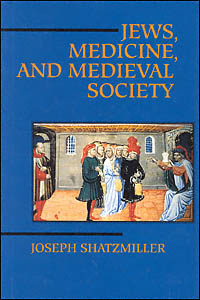 | Title: Jews, medicine, and medieval society Joseph Shatzmiller Author: Shatzmiller, Joseph Published: University of California Press, 1995 Subjects: Jewish Studies | Medieval History | European History | Medieval Studies | Medicine Publisher's Description: Jews were excluded from most professions in medieval, predominantly Christian Europe. Bigotry was widespread, yet Jews were accepted as doctors and surgeons, administering not only to other Jews but to Christians as well. Why did medieval Christians suspend their fear and suspicion of the Jews, allowing them to inspect their bodies, and even, at times, to determine their survival? What was the nature of the doctor-patient relationship? Did the law protect Jewish doctors in disputes over care and treatment?Joseph Shatzmiller explores these and other intriguing questions in the first full social history of the medieval Jewish doctor. Based on extensive archival research in Provence, Spain, and Italy, and a deep reading of the widely scattered literature, Shatzmiller examines the social and economic forces that allowed Jewish medical professionals to survive and thrive in thirteenth- and fourteenth-century Europe. His insights will prove fascinating to scholars and students of Judaica, medieval history, and the history of medicine. [brief] Similar Items |
| 2. | 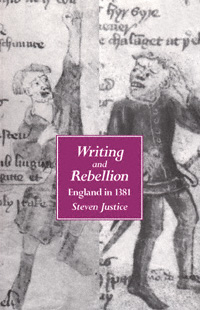 | Title: Writing and rebellion: England in 1381 Author: Justice, Steven 1957- Published: University of California Press, 1994 Subjects: Literature | Literary Theory and Criticism | Medieval Studies | Medieval History | European History Publisher's Description: In this compelling account of the "peasants' revolt" of 1381, in which rebels burned hundreds of official archives and attacked other symbols of authority, Steven Justice demonstrates that the rebellion was not an uncontrolled, inarticulate explosion of peasant resentment but an informed and tactical claim to literacy and rule.Focusing on six brief, enigmatic texts written by the rebels themselves, Justice places the English peasantry within a public discourse from which historians, both medieval and modern, have thus far excluded them. He recreates the imaginative world of medieval villagers - how they worked and governed themselves, how they used official communications in unofficial ways, and how they produced a disciplined insurgent ideology. [brief] Similar Items |
| 3. | 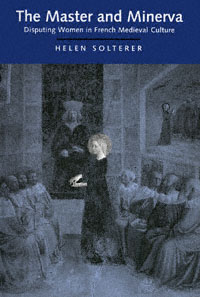 | Title: The master and Minerva: disputing women in French medieval culture Author: Solterer, Helen Published: University of California Press, 1995 Subjects: Literature | European Literature | Literary Theory and Criticism | Medieval Studies | Women's Studies | French Studies Publisher's Description: Can words do damage? For medieval culture, the answer was unambiguously yes. And as Helen Solterer contends, in French medieval culture the representation of women exemplified the use of injurious language.Solterer investigates the debates over women between masters and their disciples. Across a broad range of Old French literature to the early modern Querelle des femmes , she shows how the figure of the female respondent became an instrument for disputing the dominant models of representing women. The female respondent exploited the criterion of injurious language that so preoccupied medieval masters, and she charged master poets ethically and legally with libel. Solterer's work thus illuminates an early, decisive chapter in the history of defamation. [brief] Similar Items |
| 4. | 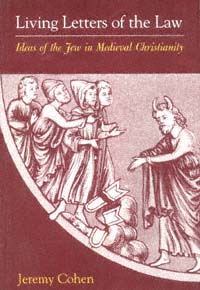 | Title: Living letters of the law: ideas of the Jew in medieval Christianity Author: Cohen, Jeremy 1953- Published: University of California Press, 1999 Subjects: Jewish Studies | Religion | Medieval History Publisher's Description: In Living Letters of the Law , Jeremy Cohen investigates the images of Jews and Judaism in the works of medieval Christian theologians from Augustine to Thomas Aquinas. He reveals how - and why - medieval Christianity fashioned a Jew on the basis of its reading of the Bible, and how this hermeneutically crafted Jew assumed distinctive character and power in Christian thought and culture.Augustine's doctrine of Jewish witness, which constructed the Jews so as to mandate their survival in a properly ordered Christian world, is the starting point for this illuminating study. Cohen demonstrates how adaptations of this doctrine reflected change in the self-consciousness of early medieval civilization. After exploring the effect of twelfth-century Europe's encounter with Islam on the value of Augustine's Jewish witnesses, he concludes with a new assessment of the reception of Augustine's ideas among thirteenth-century popes and friars.Consistently linking the medieval idea of the Jew with broader issues of textual criticism, anthropology, and the philosophy of history, this book demonstrates the complex significance of Christianity's "hermeneutical Jew" not only in the history of antisemitism but also in the broad scope of Western intellectual history. [brief] Similar Items |
| 5. | 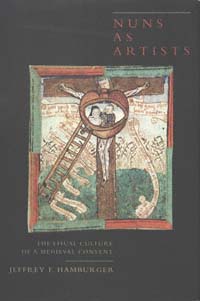 | Title: Nuns as artists: the visual culture of a medieval convent Author: Hamburger, Jeffrey F 1957- Published: University of California Press, 1997 Subjects: Art | Religion | Gender Studies | Art History | Medieval History Publisher's Description: Jeffrey F. Hamburger's groundbreaking study of the art of female monasticism explores the place of images and image-making in the spirituality of medieval nuns during the later Middle Ages. Working from a previously unknown group of late-fifteenth-century devotional drawings made by a Benedictine nun for her cloistered companions, Hamburger discusses the distinctive visual culture of female communities. The drawings discovered by Hamburger and the genre to which they belong have never been given serious consideration by art historians, yet they serve as icons of the nuns' religious vocation in all its complexity. Setting the drawings and related imagery - manuscript illumination, prints, textiles, and metalwork - within the context of religious life and reform in late medieval Germany, Hamburger reconstructs the artistic, literary, and institutional traditions that shaped the lives of cloistered women.Hamburger convincingly demonstrates the overwhelming importance of "seeing" in devotional practice, challenging traditional assumptions about the primacy of text over image in monastic piety. His presentation of the "visual culture of the convent" makes a fundamental contribution to the history of medieval art and, more generally, of late medieval monasticism and spirituality. [brief] Similar Items |
| 6. | 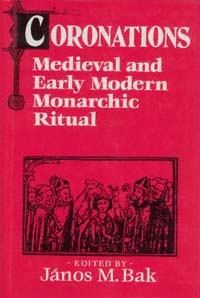 | Title: Coronations: medieval and early modern monarchic ritual Author: Bak, János M Published: University of California Press, 1990 Subjects: History | Medieval History Publisher's Description: Fascination with royal pomp and circumstance is as old as kingship itself. The authors of Coronations examine royal ceremonies from the ninth to the sixteenth century, and find the very essence of the monarchical state in its public presentation of itself. This book is an enlightened response to the revived interest in political history, written from a perspective that cultural historians will also enjoy. The symbolic and ritual acts that served to represent and legitimate monarchical power in medieval and early modern Europe include not only royal and papal coronations but also festive entries, inaugural feasts, and rulers' funerals.Fifteen leading scholars from North America, Britain, France, Germany, Poland, and Denmark explore the forms and the underlying meanings of such events, as well as problems of relevant scholarship on these subjects. All the contributions demonstrate the importance of in-depth study of rulership for the understanding of premodern power structures. Emphasis is placed on interdisciplinary approaches, drawing on the findings of ethnography and anthropology, combined with rigorous critical evaluation of the written and iconic evidence. The editor's historiographical introduction surveys the past and present of this field of study and proposes some new lines of inquiry. "For 'reality' is not a one-dimensional matter: even if we can establish what actually transpired, we still need to ask how it was perceived by those present." [brief] Similar Items |
| 7. | 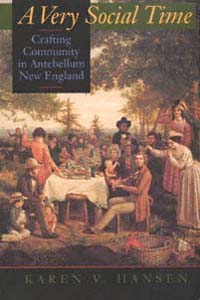 | Title: A very social time: crafting community in antebellum New England Author: Hansen, Karen V Published: University of California Press, 1994 Subjects: History | United States History | Gender Studies | Social Theory Publisher's Description: Karen Hansen's richly anecdotal narrative explores the textured community lives of New England's working women and men - both white and black - n the half century before the Civil War. Her use of diaries, letters, and autobiographies brings their voices to life, making this study an extraordinary combination of historical research and sociological interpretation.Hansen challenges conventional notions that women were largely relegated to a private realm and men to a public one. A third dimension - the social sphere - also existed and was a critical meeting ground for both genders. In the social worlds of love, livelihood, gossip, friendship, and mutual assistance, working people crossed ideological gender boundaries.The book's rare collection of original writings reinforces Hansen's arguments and also provides an intimate glimpse into antebellum New England life. [brief] Similar Items |
| 8. | 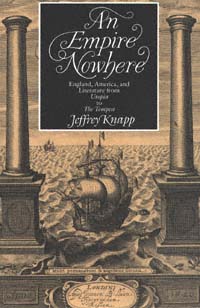 | Title: An empire nowhere: England, America, and literature from Utopia to The tempest Author: Knapp, Jeffrey Published: University of California Press, 1991 Subjects: Literature | Literary Theory and Criticism | United States History | Renaissance Literature | European History Publisher's Description: What caused England's literary renaissance? One answer has been such unprecedented developments as the European discovery of America. Yet England in the sixteenth century was far from an expanding nation. Not only did the Tudors lose England's sole remaining possessions on the Continent and, thanks to the Reformation, grow spiritually divided from the Continent as well, but every one of their attempts to colonize the New World actually failed.Jeffrey Knapp accounts for this strange combination of literary expansion and national isolation by showing how the English made a virtue of their increasing insularity. Ranging across a wide array of literary and extraliterary sources, Knapp argues that English poets rejected the worldly acquisitiveness of an empire like Spain's and took pride in England's material limitations as a sign of its spiritual strength. In the imaginary worlds of such fictions as Utopia , The Faerie Queene , and The Tempest , they sought a grander empire, founded on the "otherworldly" virtues of both England and poetry itself. [brief] Similar Items |
| 9. | 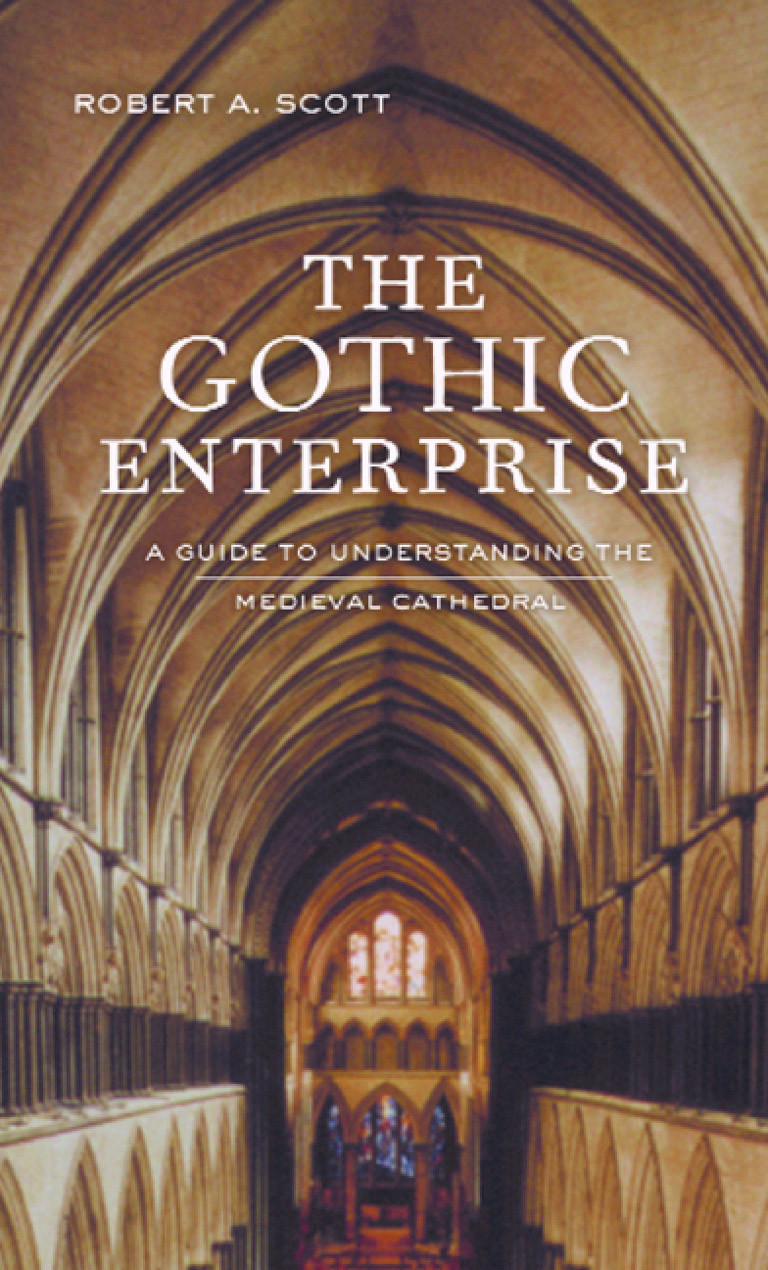 | Title: The Gothic enterprise: a guide to understanding the Medieval cathedral Author: Scott, Robert A 1935- Published: University of California Press, 2003 Subjects: Medieval Studies | Architecture | European Studies | Christianity | European History | Architectural History | Sociology | Sociology Publisher's Description: The great Gothic cathedrals of Europe are among the most astonishing achievements of Western culture. Evoking feelings of awe and humility, they make us want to understand what inspired the people who had the audacity to build them. This engrossing book surveys an era that has fired the historical imagination for centuries. In it Robert A. Scott explores why medieval people built Gothic cathedrals, how they built them, what conception of the divine lay behind their creation, and how religious and secular leaders used cathedrals for social and political purposes. As a traveler's companion or a rich source of knowledge for the armchair enthusiast, The Gothic Enterprise helps us understand how ordinary people managed such tremendous feats of physical and creative energy at a time when technology was rudimentary, famine and disease were rampant, the climate was often harsh, and communal life was unstable and incessantly violent. While most books about Gothic cathedrals focus on a particular building or on the cathedrals of a specific region, The Gothic Enterprise considers the idea of the cathedral as a humanly created space. Scott discusses why an impoverished people would commit so many social and personal resources to building something so physically stupendous and what this says about their ideas of the sacred, especially the vital role they ascribed to the divine as a protector against the dangers of everyday life. Scott's narrative offers a wealth of fascinating details concerning daily life during medieval times. The author describes the difficulties master-builders faced in scheduling construction that wouldn't be completed during their own lifetimes, how they managed without adequate numeric systems or paper on which to make detailed drawings, and how climate, natural disasters, wars, variations in the hours of daylight throughout the year, and the celebration of holy days affected the pace and timing of work. Scott also explains such things as the role of relics, the quarrying and transporting of stone, and the incessant conflict cathedral-building projects caused within their communities. Finally, by drawing comparisons between Gothic cathedrals and other monumental building projects, such as Stonehenge, Scott expands our understanding of the human impulses that shape our landscape. [brief] Similar Items |
| 10. | 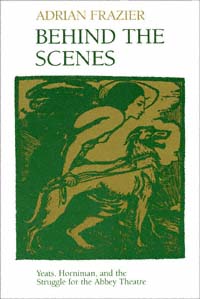 | Title: Behind the scenes: Yeats, Horniman, and the struggle for the Abbey Theatre Author: Frazier, Adrian Woods Published: University of California Press, 1990 Subjects: Literature | English Literature | Poetry | Theatre Publisher's Description: Behind the Scenes presents the story of Dublin's famous Abbey Theatre and its major creative personalities: W. B. Yeats, Annie Horniman, J. M. Synge, and Lady Gregory. Part history, part sociology, part biography, Frazier's work recreates the forces that shaped the Abbey stage, forces that involved the spirited participation of actors, audiences, press, and financiers as well as of the famous poet-playwright who was its co-director. His book unfolds an entertaining and suspenseful tale, centered on the undeniably autocratic personality of W.B. Yeats and with the political struggles of Ireland as a backdrop. [brief] Similar Items |
| 11. | 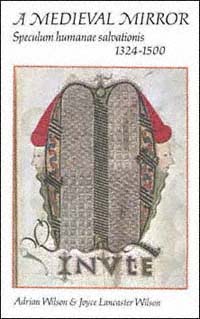 | Title: A medieval mirror, Speculum humanae salvationis, 1324-1500 Author: Wilson, Adrian Published: University of California Press, 1985 Subjects: Art | Architecture Publisher's Description: The Speculum Humanae Salvationis or "Mirror of Human Salvation," is the only medieval work that exists in illuminated manuscripts, in blockbook editions of the mid-fifteenth century, and in sixteen later incunabula. The authors have provided lavishly illustrated accounts of the manuscripts and inclu . . . [more] Similar Items |
| 12. | 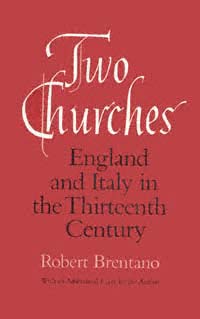 | Title: Two churches: England and Italy in the thirteenth century Author: Brentano, Robert 1926- Published: University of California Press, 1988 Subjects: History | European History | Medieval History | Medieval Studies | Religion Similar Items |
| 13. | 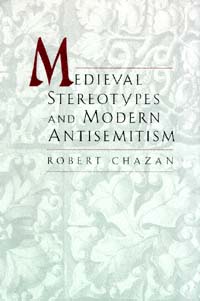 | Title: Medieval stereotypes and modern antisemitism Author: Chazan, Robert Published: University of California Press, 1997 Subjects: Medieval Studies | Jewish Studies | Medieval History | European History | European Studies Publisher's Description: The twelfth century in Europe, hailed by historians as a time of intellectual and spiritual vitality, had a dark side. As Robert Chazan points out, the marginalization of minorities emerged during the "twelfth-century renaissance" as part of a growing pattern of persecution, and among those stigmatized the Jews figured prominently.The migration of Jews to northern Europe in the late tenth century led to the development of a new set of Jewish communities. This northern Jewry prospered, only to decline sharply two centuries later. Chazan locates the cause of the decline primarily in the creation of new, negative images of Jews. He shows how these damaging twelfth-century stereotypes developed and goes on to chart the powerful, lasting role of the new anti-Jewish imagery in the historical development of antisemitism.This coupling of the twelfth century's notable intellectual bequests to the growth of Western civilization with its legacy of virulent anti-Jewish motifs offers an important new key to understanding modern antisemitism. [brief] Similar Items |
| 14. | 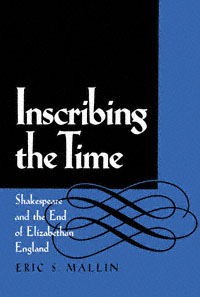 | Title: Inscribing the time: Shakespeare and the end of Elizabethan England Author: Mallin, Eric Scott Published: University of California Press, 1995 Subjects: Literature | English Literature | Literary Theory and Criticism | Renaissance Literature Publisher's Description: Combining the resources of new historicism, feminism, and postmodern textual analysis, Eric Mallin reveals how contemporary pressures left their marks on three Shakespeare plays written at the end of Elizabeth's reign. Close attention to the language of Troilus and Cressida , Hamlet , and Twelfth Night reveals the ways the plays echo the events and anxieties that accompanied the beginning of the seventeenth century. Troilus reflects the rebellion of the Earl of Essex and the failure of the courtly, chivalric style. Hamlet resonates with the danger of the bubonic plague and the difficult succession history of James I. Twelfth Night is imbued with nostalgia for an earlier period of Elizabeth's rule, when her control over religious and erotic affairs seemed more secure. [brief] Similar Items |
| 15. | 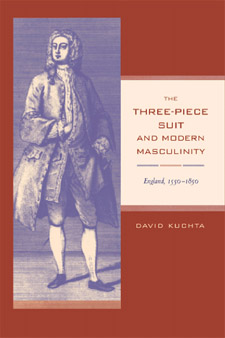 | Title: The three-piece suit and modern masculinity: England, 1550-1850 Author: Kuchta, David 1960- Published: University of California Press, 2002 Subjects: History | European History | Men and Masculinity Publisher's Description: In 1666, King Charles II felt it necessary to reform Englishmen's dress by introducing a fashion that developed into the three-piece suit. We learn what inspired this royal revolution in masculine attire--and the reasons for its remarkable longevity--in David Kuchta's engaging and handsomely illustrated account. Between 1550 and 1850, Kuchta says, English upper- and middle-class men understood their authority to be based in part upon the display of masculine character: how they presented themselves in public and demonstrated their masculinity helped define their political legitimacy, moral authority, and economic utility. Much has been written about the ways political culture, religion, and economic theory helped shape ideals and practices of masculinity. Kuchta allows us to see the process working in reverse, in that masculine manners and habits of consumption in a patriarchal society contributed actively to people's understanding of what held England together. Kuchta shows not only how the ideology of modern English masculinity was a self-consciously political and public creation but also how such explicitly political decisions and values became internalized, personalized, and naturalized into everyday manners and habits. [brief] Similar Items |
| 16. | 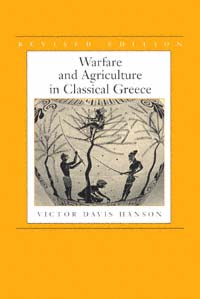 | Title: Warfare and agriculture in classical Greece Author: Hanson, Victor Davis Published: University of California Press, 1998 Subjects: Classics | Classical History | Military History | Ancient History | Classical Politics | Agriculture Publisher's Description: The ancient Greeks were for the most part a rural, not an urban, society. And for much of the Classical period, war was more common than peace. Almost all accounts of ancient history assume that farming and fighting were critical events in the lives of the citizenry. Yet never before have we had a comprehensive modern study of the relationship between agriculture and warfare in the Greek world. In this completely revised edition of Warfare and Agriculture in Classical Greece , Victor Davis Hanson provides a systematic review of Greek agriculture and warfare and describes the relationship between these two important aspects of life in ancient communities. With careful attention to agronomic as well as military details, this well-written, thoroughly researched study reveals the remarkable resilience of those farmland communities.In the past, scholars have assumed that the agricultural infrastructure of ancient society was often ruined by attack, as, for example, Athens was relegated to poverty in the aftermath of the Persian and later Peloponnesian invasions. Hanson's study shows, however, that in reality attacks on agriculture rarely resulted in famines or permanent agrarian depression. Trees and vines are hard to destroy, and grainfields are only briefly vulnerable to torching. In addition, ancient armies were rather inefficient systematic ravagers and instead used other tactics, such as occupying their enemies' farms to incite infantry battle. Warfare and Agriculture in Classical Greece suggests that for all ancient societies, rural depression and desolation came about from more subtle phenomena - taxes, changes in political and social structure, and new cultural values - rather than from destructive warfare. [brief] Similar Items |
| 17. | 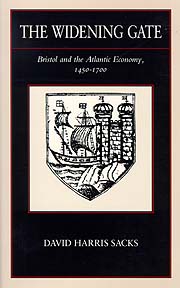 | Title: The widening gate: Bristol and the Atlantic economy, 1450-1700 Author: Sacks, David Harris 1942- Published: University of California Press, 1991 Subjects: History | Renaissance History | European History | United States History Similar Items |
| 18. | 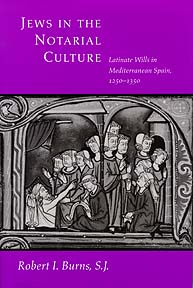 | Title: Jews in the notarial culture: Latinate wills in Mediterranean Spain, 1250-1350 Author: Burns, Robert Ignatius Published: University of California Press, 1996 Subjects: Medieval Studies | Judaism | Jewish Studies | European History | Law | Medieval History Publisher's Description: In the rapidly transforming world of thirteenth-century Mediterranean Spain, the all-purpose scribe and contract lawyer known as the notary became a familiar figure. Most legal transactions of the Roman Law Renaissance were framed in this functionary's notoriously hasty shorthand. Notarial archives, then, offer a remarkable window on the daily life of this pluri-ethnic society. Robert I. Burns brings together the testimony of a multitude of documents, and transcribes in full nearly fifty will-related charters prepared by notaries, to give a never-before-seen view of Jewish society in that place and time.Wills can display the religious conscience, ethical institutions, social mobility, and property dynamics of whole groups or regions. Even a single testament allows a glimpse into the testator's family and into the life and times of the living person. Burns devotes special attention to women in wills and to women's wills, extracting rich information on medieval women and gender relationships.While learning much about the role of kings and courts and the dynamics of Christian-Jewish relations, the reader also gains rare insights into a unique Jewish community. [brief] Similar Items |
| 19. | 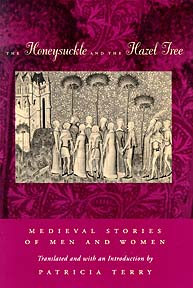 | Title: The honeysuckle and the hazel tree: medieval stories of men and women Author: Terry, Patricia Ann 1929- Published: University of California Press, 1995 Subjects: Literature | Literature in Translation | European Literature | Poetry | Literary Theory and Criticism | French Studies | Medieval Studies | Gender Studies Publisher's Description: Known for her fine translations of octosyllabic narrative verse, Patricia Terry presents translations of four major practitioners of this dominant literary form of twelfth- and thirteenth-century France. Her introduction discusses the varying views of women and love in the texts and their place in the courtly tradition.From Chrétien de Troyes Terry includes an early work, Philomena , here translated into verse for the first time. The other great writer of this period was Marie de France, the first woman in the European narrative tradition. Lanval is newly translated for this edition, which also features four of Marie's other poems. The collection further includes The Reflection by Jean Renart, known for his realistic settings; and the anonymous Chatelaine of Vergi , a fatalistic and perhaps more modern depiction of love. [brief] Similar Items |
| 20. | 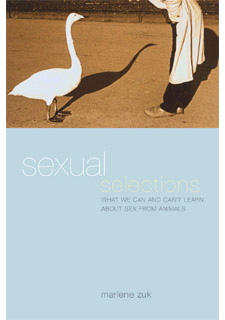 | Title: Sexual selections: what we can and can't learn about sex from animals Author: Zuk, M. (Marlene) Published: University of California Press, 2002 Subjects: Organismal Biology | Cultural Anthropology | Evolution | Gender Studies | Animal Behavior | Sociology | Biology Publisher's Description: Scientific discoveries about the animal kingdom fuel ideological battles on many fronts, especially battles about sex and gender. We now know that male marmosets help take care of their offspring. Is this heartening news for today's stay-at-home dads? Recent studies show that many female birds once thought to be monogamous actually have chicks that are fathered outside the primary breeding pair. Does this information spell doom for traditional marriages? And bonobo apes take part in female-female sexual encounters. Does this mean that human homosexuality is natural? This highly provocative book clearly shows that these are the wrong kinds of questions to ask about animal behavior. Marlene Zuk, a respected biologist and a feminist, gives an eye-opening tour of some of the latest developments in our knowledge of animal sexuality and evolutionary biology. Sexual Selections exposes the anthropomorphism and gender politics that have colored our understanding of the natural world and shows how feminism can help move us away from our ideological biases. As she tells many amazing stories about animal behavior--whether of birds and apes or of rats and cockroaches--Zuk takes us to the places where our ideas about nature, gender, and culture collide. Writing in an engaging, conversational style, she discusses such politically charged topics as motherhood, the genetic basis for adultery, the female orgasm, menstruation, and homosexuality. She shows how feminism can give us the tools to examine sensitive issues such as these and to enhance our understanding of the natural world if we avoid using research to champion a feminist agenda and avoid using animals as ideological weapons. Zuk passionately asks us to learn to see the animal world on its own terms, with its splendid array of diversity and variation. This knowledge will give us a better understanding of animals and can ultimately change our assumptions about what is natural, normal, and even possible. [brief] Similar Items |